Sapphire’s Radeon HD 5850 Toxic Edition: Our First Fully-Custom 5850
by Ryan Smith on February 18, 2010 10:00 PM EST- Posted in
- GPUs
The Test & Results
Sapphire’s 5850 Toxic edition is clocked at 765MHz/1125MHz, a 5.5%/12.5% overclock on the core and memory respectively. So performance compared to a reference 5850 can be anywhere between no improvement (CPU limited) to a full 12.5% improvement if the bottleneck is memory bandwidth. This of course will vary from game to game.
| CPU: | Intel Core i7-920 @ 3.33GHz |
| Motherboard: | Intel DX58SO (Intel X58) |
| Chipset Drivers: | Intel 9.1.1.1015 (Intel) |
| Hard Disk: | Intel X25-M SSD (80GB) |
| Memory: | Patriot Viper DDR3-1333 3 x 2GB (7-7-7-20) |
| Video Cards: |
AMD Radeon HD 5970 AMD Radeon HD 5870 AMD Radeon HD 5850 AMD Radeon HD 5770 AMD Radeon HD 5750 AMD Radeon HD 5670 512MB AMD Radeon HD 4890 AMD Radeon HD 4870 1GB AMD Radeon HD 4850 AMD Radeon HD 3870 AMD Radeon HD 4770 AMD Radeon HD 4670 512MB NVIDIA GeForce GTX 295 NVIDIA GeForce GTX 285 NVIDIA GeForce GTX 275 NVIDIA GeForce GTX 260 Core 216 NVIDIA GeForce GTS 250 NVIDIA GeForce 8800 GT |
| Video Drivers: |
NVIDIA ForceWare 190.62 NVIDIA ForceWare 195.62 AMD Catalyst Beta 8.66 AMD Catalyst Beta 8.66.6 AMD Catalyst 9.9 AMD Catalyst Beta 8.69 |
| OS: | Windows 7 Ultimate 64-bit |
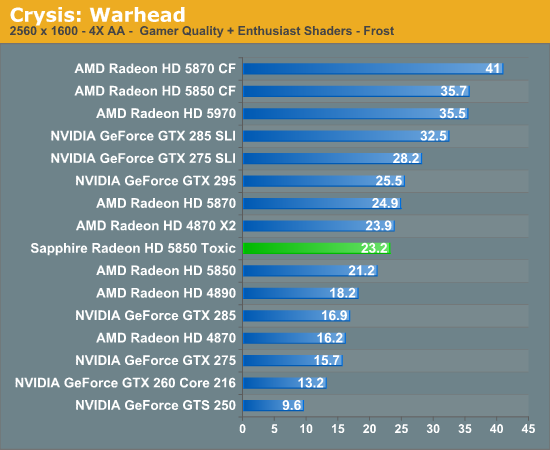
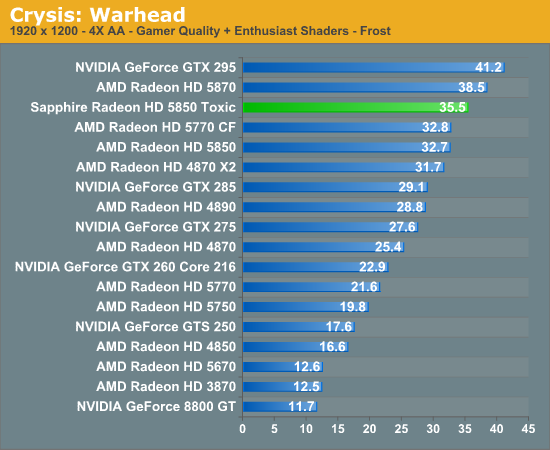
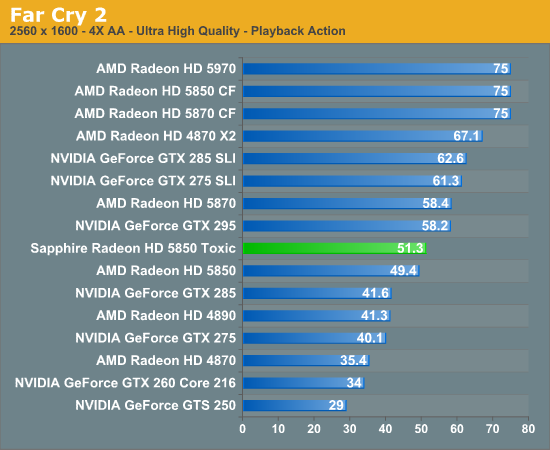
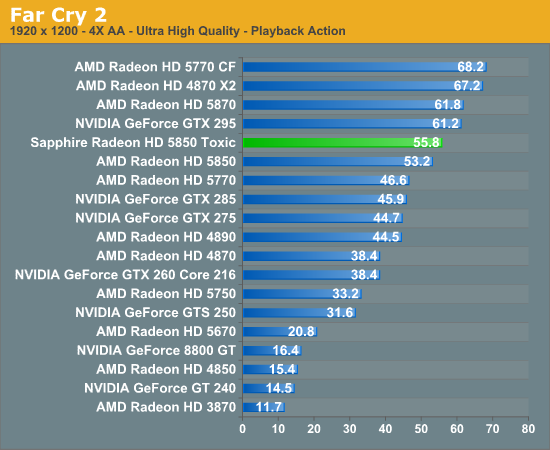
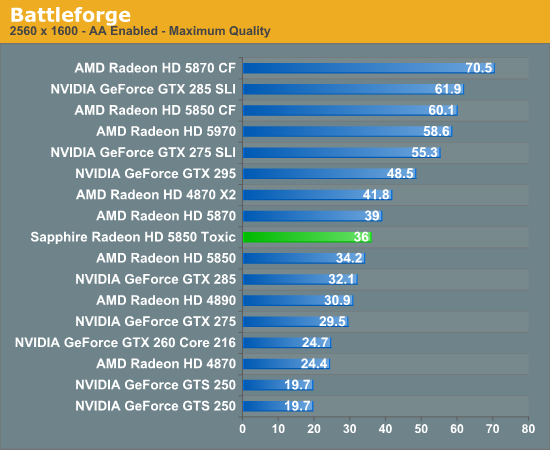
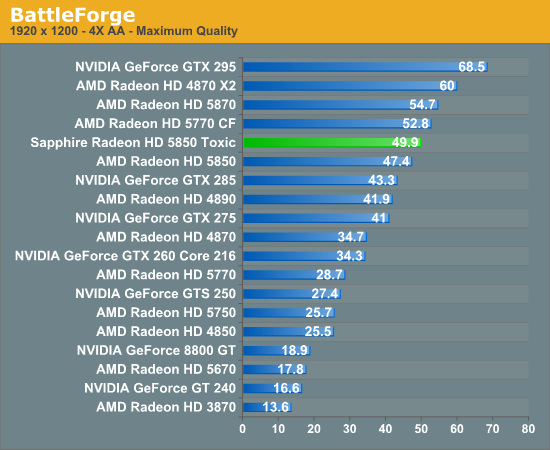

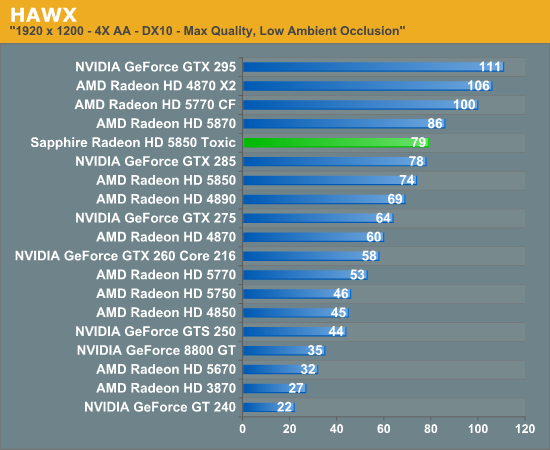
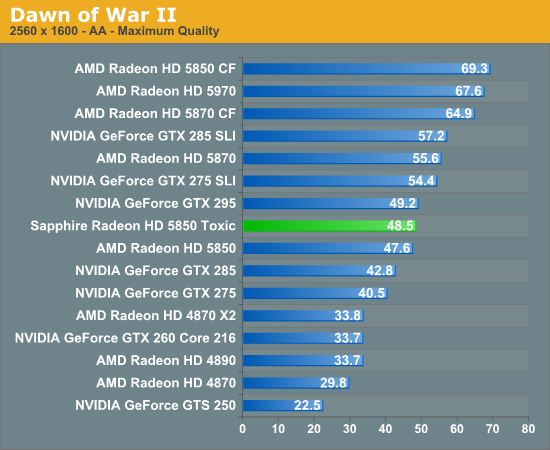
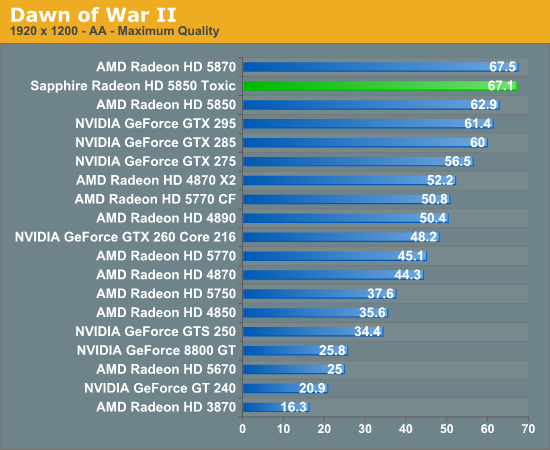

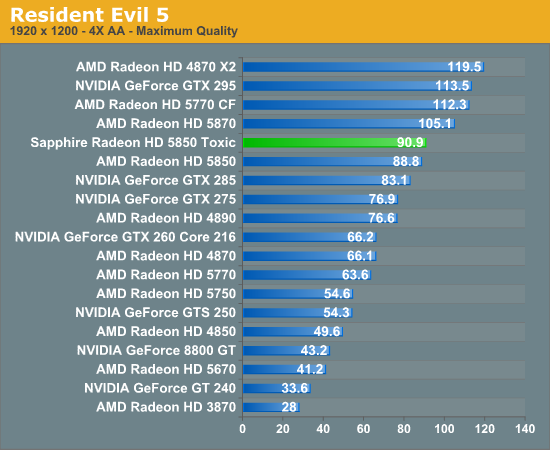
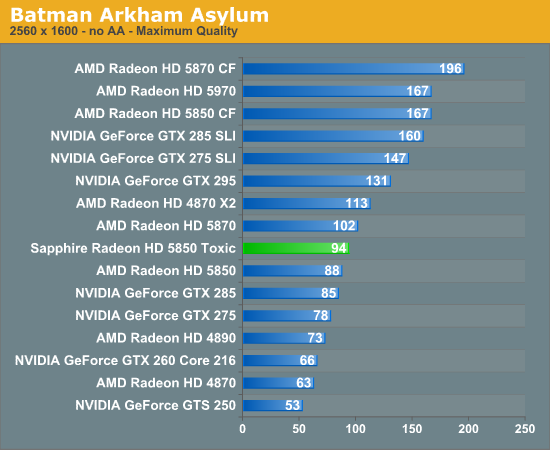
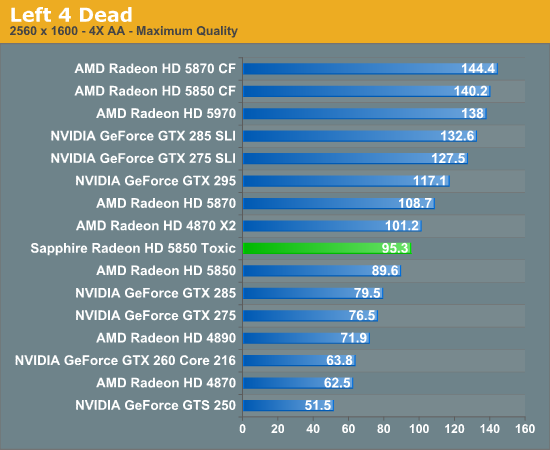
The difference, as we expected, is varying from game to game. The factory overclock on the 5850 Toxic isn’t enough to significantly shift the performance of the card, but it’s enough for 5-10% better than a stock-clocked 5850.










71 Comments
View All Comments
just4U - Friday, February 19, 2010 - link
Yeah turned out to be Java:selace ... Don't know where the hell I could have picked it up from. Ah well cleaned after a full check.7Enigma - Friday, February 19, 2010 - link
It's not from Anand's site, though I've gotten that at work from another site which resulted in a hosed system (they use an old version of IE without popup blocker and won't let 3rd party browsers be used...).just4U - Friday, February 19, 2010 - link
I am using IE8 here with all security patches in play. Going to do a full scan with Malwarebytes and MS SecurityE and see if they pick anything up.. just did quick scans afterall.It bypassed the popup blocker initially and showed a small prompt on screen saying I may be infected. Closing and canceling had no effect as it still re-routed my browser to a look-alike Vista control panel type page.
7Enigma - Friday, February 19, 2010 - link
Please in the future when testing a factory overclocked card highlight the STOCK card in the graphs. It's frustrating to constantly hunt through the cards in each chart to see the difference between the stock 5850 and the Sapphire card.Thanks.
legoman666 - Friday, February 19, 2010 - link
You mention an overdrive clock limit of 775. My 5850 is currently running at 825 overclocked via CCC. It goes even higher; somewhere around 900. Why are you using the 9.9s when the 10.2's are available? Maybe that's why your overclock is so limited.Ryan Smith - Friday, February 19, 2010 - link
It's not a driver issue. The OD limit is hardcoded in to the BIOS. My reference 5850s have the same 775/1125 limit.What 5850 do you have? None of them should be shipping with a higher overdrive limit from what AMD tells me.
legoman666 - Sunday, February 21, 2010 - link
http://i28.photobucket.com/albums/c241/legoman666/...">http://i28.photobucket.com/albums/c241/legoman666/... @ 825legoman666 - Sunday, February 21, 2010 - link
http://i28.photobucket.com/albums/c241/legoman666/...">http://i28.photobucket.com/albums/c241/legoman666/...I have an Asus EAH5850. It's at stock clocks in the pic, but I've had it up to ~880.
Barneyk - Friday, February 19, 2010 - link
That was a bit strange to me. The card keeps most of the heat dissipated from the card in the case and it produces more heat then a standard 5850.So if you have a very well-ventilated case I guess its not an issue but what if you dont?
Would you still recommend it?
erple2 - Friday, February 19, 2010 - link
I don't think that he mentions what portion of the heat the Toxic vents into vs. out of the case. However, it would stand to reason that a well-ventilated case would be important either way.That does bring up an interesting point, however, that may be outside of the scope of this article. I'm assuming that all of the testing is done in a well-ventilated case. If the temperatures inside of the case were sufficiently high enough, it would start to impact the temperature of the card significantly. Given that the Toxic runs "cooler" than the stock card, one of two things is true:
1. The recirculating temperature problem is a non-issue
2. The case Ryan uses is well ventilated and thus the temperature problem is a non-issue.
The conclusion, then, is that it's a non-issue. However, who, buying an enthusiast card like this for 300+ dollars, doesn't have a well-ventilated case? I suppose that there are people out there that don't. Perhaps an investment in a quality case would be in order? At least, case performance takes a long time to become obsolete (unlike, for example, video cards).